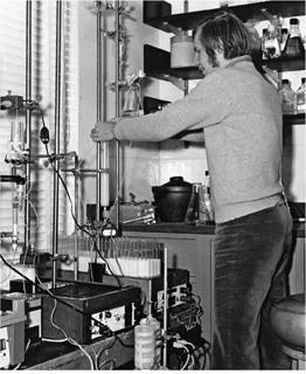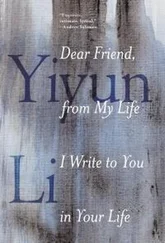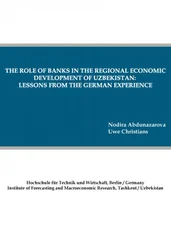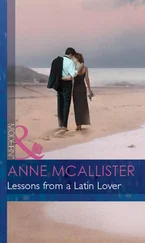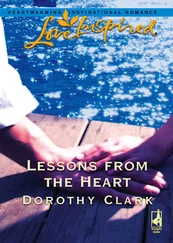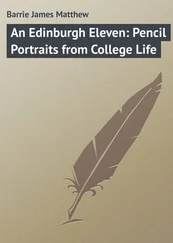James Watson - AVOID BORING PEOPLE - Lessons from a Life in Science
Здесь есть возможность читать онлайн «James Watson - AVOID BORING PEOPLE - Lessons from a Life in Science» весь текст электронной книги совершенно бесплатно (целиком полную версию без сокращений). В некоторых случаях можно слушать аудио, скачать через торрент в формате fb2 и присутствует краткое содержание. Жанр: Биографии и Мемуары. Описание произведения, (предисловие) а так же отзывы посетителей доступны на портале библиотеки ЛибКат.
- Название:AVOID BORING PEOPLE: Lessons from a Life in Science
- Автор:
- Жанр:
- Год:неизвестен
- ISBN:нет данных
- Рейтинг книги:5 / 5. Голосов: 1
-
Избранное:Добавить в избранное
- Отзывы:
-
Ваша оценка:
- 100
- 1
- 2
- 3
- 4
- 5
AVOID BORING PEOPLE: Lessons from a Life in Science: краткое содержание, описание и аннотация
Предлагаем к чтению аннотацию, описание, краткое содержание или предисловие (зависит от того, что написал сам автор книги «AVOID BORING PEOPLE: Lessons from a Life in Science»). Если вы не нашли необходимую информацию о книге — напишите в комментариях, мы постараемся отыскать её.
AVOID BORING PEOPLE: Lessons from a Life in Science — читать онлайн бесплатно полную книгу (весь текст) целиком
Ниже представлен текст книги, разбитый по страницам. Система сохранения места последней прочитанной страницы, позволяет с удобством читать онлайн бесплатно книгу «AVOID BORING PEOPLE: Lessons from a Life in Science», без необходимости каждый раз заново искать на чём Вы остановились. Поставьте закладку, и сможете в любой момент перейти на страницу, на которой закончили чтение.
Интервал:
Закладка:
During mid-July, Liz and I were briefly in England so I could take part in a forthcoming hourlong BBC Horizon program on DNA. Our second son, Duncan, was only five months old and so I initially did not want to participate. But Francis, normally allergic to TV exposure,
was keen on the project. So for several days we were filmed walking through key Cambridge colleges or standing next to the bar at the Eagle, the pub where twenty years before we'd regularly eaten lunch, and where Francis had first brazenly announced our having discovered the secret of life. An unusual ingredient ofthat interlude was the constant presence of the producer's girlfriend Eva. Several years before, she had been crowned Miss World, and she still retained global dimensions. Sadly, though, she may have paid dearly for a picture-perfect figure, regurgitating meals, as Liz accidentally observed her doing in the washroom of the restaurant one evening.That summer, Cold Spring Harbor Laboratory published Experiments in Molecular Genetics, a much expanded version of material taught by Jeffrey Miller two years before in our annual bacterial genetics course. Its intellectual sparkle and visual elegance would likely lead to its wide adoption and thus real money for the Lab. It was a bargain—maybe too much of one: more than 450 pages for only $11.95. Like Jeffrey and all our other authors, I also then wrote gratis for the Lab. At roughly the same time, I was about to finish two long introductory chapters for the Molecular Biology of Tumor Viruses. When first conceived, it was to be a short book. But it steadily grew to more than 750 pages in thirteen chapters, written by twenty-two authors who included David Baltimore and Howard Temin, who were to share the 1975 Nobel Prize for their research on retroviruses. Also writing much of the book was Joe Sambrook, whose great talents as a scientist I found equaled by his ability to produce succinct, readable prose as well as edit the lesser sentences of others, myself included. He refused, however, to share credit as one of the editors. The book spine later showed only the name of my former Harvard postdoc, John Tooze, then in central London helping Michael Stoker run the Imperial Cancer Research Fund Laboratory bordering on Lincoln's Inn Fields.
The Lab's next book was the small volume Biohazards, drawn from the proceedings of a meeting held in January 1973 at the Asilomar Conference Center near Monterey, California. Its three days of discussions were organized to codify lab procedures appropriate for working with tumor viruses. No consensus emerged, however, among the one hundred attendees as to what precautions, if any, should be taken.
Helping to organize the meeting as well as to edit the book was our recently appointed staff member Bob Pollack, continuing research on SV40-transformed cells that he began at New York University Medical School. Originally a physicist, Bob had anxieties like those of Charlie Thomas about the safety of tumor virus research. I sometimes shared those worries, and as a precaution discontinued positive air pressure in our James virus labs. Positive air pressure was widely used in microbiology, a relatively higher pressure in the room preventing microbial contaminants in the outside air from entering. By the time of the meeting we had put these rooms under negative pressure, with their air venting through HEPA niters to keep viruses from escaping into the outside air.Of increasing concern to me then was the possible doubling in size of the fifty-slip Whaler's Cove Marina on the eastern shore of the inner harbor. As it was, it posed no real aesthetic threat to the tran-quility of our waterfront. But it had been purchased two years earlier by Arthur Knutson, principal owner of the larger marina operations in nearby Huntington Harbor, who shortly thereafter proposed to use the adjacent Captain White House to expand the local yacht club. This would turn Cold Spring Harbor into a very busy port indeed. Though neighbors had legally challenged Knutson's proposal, we were advised they were likely to lose. If our harbor was to be saved, the Lab somehow had to buy the marina.
Our able administrative director, Bill Udry, recruited Jerome Ambro, supervisor of the Town of Huntington, to help us. His intervention was critical since the town of Cold Spring Harbor did not exist as a legal entity—the eastern shore of the inner harbor was actually a part of Huntington. Bill and Jerry came to lunch at Osterhout, where we looked out on the marina while enjoying Liz's poached oysters. I was never privy to how Ambro subsequently persuaded Arthur Knutson to sell us the Whaler's Cove site. It was too bad, I thought, the Lab did not have means then also to buy the sea captain's handsome house.
The Board of Trustees approved the purchase early in June, just a week after the Robertson Research Fund formally came into existence. But their concordance was not as routine as expected. Arguing against
the acquisition was our nearby neighbor Walter Page. Long an important Lab friend and a trustee during John Cairns's first years as director, Walter had left the board when the Morgan Bank sent him to London for several years to run their European operations. Upon his return, we asked him to rejoin the Board, but he begged off, citing his growing Morgan responsibilities. But when Charlie Robertson became our benefactor, Walter knew he had to come back to make sure our new riches would not be squandered. Spending $300,000 to buy a marina was not Walter's idea of a prudent first expenditure. I, however, believed that not to make the purchase was surely to waste perhaps our only chance to forever preserve the inner harbor's pristine state. An ideal setting for science is not a matter of purely utilitarian considerations. Sensing our fellow trustees swaying in Walter's direction, however, I threw a Hail Mary pass, threatening to resign if the marina was not purchased. After I made my announcement, I left the James seminar room and walked back to Osterhout Cottage, about a minute away.There Liz was entertaining Marilyn Zinder, whose husband, Norton, was attending the Trustees meeting. I announced my abrupt move, and we nervously waited some forty-five minutes until Bentley Glass came in to say that the trustees had just voted to purchase Whaler's Cove. I walked back with him to the meeting, rather sheepish at having got my way by reason of blackmail. I would never again challenge Walter, against whom one public victory was one too many. As Cold Spring Harbor's most respected resident and an old friend of the Lab, he should have been informed well in advance of the meeting of how strongly I felt. Harvard duties that spring, however, had kept Liz and me largely in Cambridge. There we were comfortably ensconced in a Harvard-owned Kirkland Place house, less than three hundred feet from Paul Doty's much bigger mansard-roofed mansion. It had become our Cambridge residence in the fall of 1971, giving us plenty of space in which to prepare for the impending birth of our son Duncan early in 1972.
I no longer had John Cairns to help me bat around the pros and cons of impending Lab decisions. In early March, he returned to
England to take the directorship of Mill Hill Laboratory of the Imperial Cancer Research Fund. The previous four years, his position at Cold Spring Harbor had been happily stabilized and paid for by an American Cancer Society professorship. Soon after getting it, John threw a big wrench into the science of Arthur Kornberg by finding an E. coli mutant able to live without his famous enzyme DNA polymerase. Its existence soon led to several successive searches for alternative DNA polymerases. Without John's genetic approach, the inherent complexity of DNA replication would have remained unknown much longer.The Cairns family's departure opened up the possibility of my family occupying Airslie, the large rambling wooden structure that had housed the Lab's directors for almost thirty years. Built in 1806 for Major William Jones, Airslie had come into the Lab's possession upon the wartime dissolution of the late Henry deForest's large estate to the immediate north along Bungtown Road. Before Liz and the children and I moved in, however, we undertook a badly needed massive renovation. The Lab had previously never had funds for anything except the occasional fresh coat of paint and, once, a new roof. Cold winter winds blew through Airslie during all the years of Demerec's and Cairns's occupancy.
Читать дальшеИнтервал:
Закладка:
Похожие книги на «AVOID BORING PEOPLE: Lessons from a Life in Science»
Представляем Вашему вниманию похожие книги на «AVOID BORING PEOPLE: Lessons from a Life in Science» списком для выбора. Мы отобрали схожую по названию и смыслу литературу в надежде предоставить читателям больше вариантов отыскать новые, интересные, ещё непрочитанные произведения.
Обсуждение, отзывы о книге «AVOID BORING PEOPLE: Lessons from a Life in Science» и просто собственные мнения читателей. Оставьте ваши комментарии, напишите, что Вы думаете о произведении, его смысле или главных героях. Укажите что конкретно понравилось, а что нет, и почему Вы так считаете.
